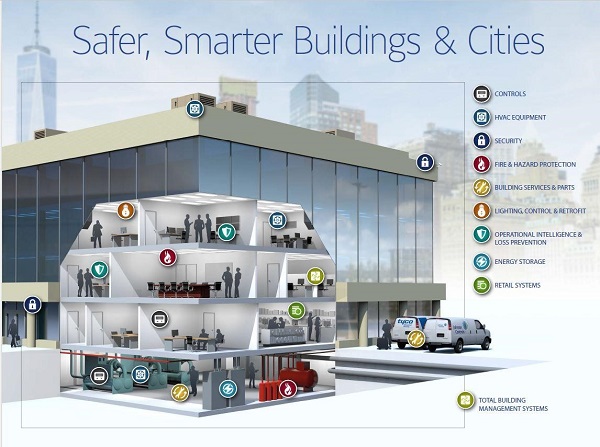“In the process of smart cities planning, street lighting is considered an important foundational measure in which higher bandwidth applications such as sensors, air-quality meters, security cameras, wireless chargers, and solar power systems can be installed to improve a city’s resilience and quality of life,” explained Brown. “Street lights are so crucial that we called them ‘vertical assets’ instead. It can bring so much more than just illumination. That’s how beneficial connected smart street lighting can be.”
Myth Busted: U.S. is not Leading but Catching up Smart City Trends
Johnson Controls has been leading a myriad of energy efficiency programs both within and outside of the United States, recruiting numerous lighting and electronic technology companies and harnessing their products and services to bring both economic and environmental benefits to buildings and cities that have been made smart and energy efficient. Brown contended, considering aforementioned rapid urbanization, smart city planning would eventually be implemented on a global scale. More and more smart city projects are put into practice in regions such as India, Singapore, Dubai, Europe, China and North America.
Among those places, it is Europe and Asia, rather than the U.S., that are currently leading many of the city transformation trends, said Brown. Europe, especially Western and North Europe, has developed a highly competitive energy efficiency market based on government policies to save a certain level of energy by 2020, requiring a solid knowledge base in regards to street lighting, HVAC systems, security systems, and other energy saving services. On the other hand, countries in Asia, such as China and India, are facing and trying to tackle problems of booming population, severe pollution and inefficient energy usage.
The Government of India launched in 2015 Smart Cities Mission and a total program investment of USD 15 billion, aiming to renew 100 cities’ looks and infrastructures. Some cities like Chandigarh have begun their makeovers by replacing conventional lighting with smart LED street lighting. Likewise, in China, the 13th Five-Year Plan 2016-2020 also targets to reduce carbon emission by 18 percent, according to recent Navigant research. Tier 1 cities along the coast have completed installation of over 20,000 efficient LED street lights.
“So, while the U.S. is moving forward rapidly, we are looking to other regions for lessons learned and still catching up with many smart city trends,” stated Brown. Despite that, as a constant partner of municipalities, Johnson Controls is actively promoting the concept of smart cities and assisting the public sector with their urban renewal projects. Johnson Controls has completed intelligent street lighting system installation in cities such as Binghamton, NY, and El Paso, Texas. Brown also revealed that Johnson Controls is currently working with many municipalities across the country. The company expects the market of intelligent street lighting will grow by 20-30 percent at a noticeable CAGR by 2020. In the next two decades, it will be a major focus, Brown concluded.
(Lisa Brown, Senior National Director of Municipal Infrastructure and Smart Cities for Johnson Controls was interviewed by Joanne Wu and Evangeline Huang. The article was written by Evangeline Huang, Editor, LEDinside)














